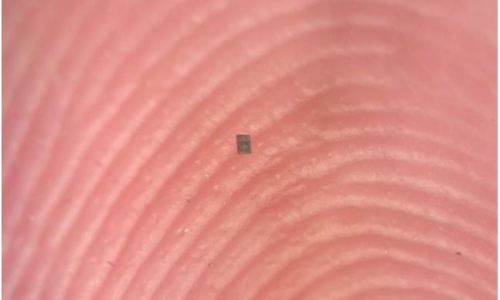


 12:1:54
12:1:54  2024-11-09
2024-11-09  915
915

A buzz of clicks and gleeful victory squeals compose the soundtrack in the first footage ever recorded from the perspective of dolphins freely hunting off the coast of North America.
For a scientific study published in 2022, the US Navy strapped cameras to dolphins, which are trained to help identify undersea mines and protect some of America's nuclear stockpile, then gave them free rein to hunt in San Diego Bay.
The clever marine mammals did not disappoint, offering up exciting chases and even targeting venomous sea snakes to the surprise of the researchers.
For such popular, well-known animals, there are still so many basic things we don't yet know about these highly social and often gross cetaceans, like precisely how they typically feed.
Researchers broadly know of at least two techniques: slurping up prey like noodles from a bowl, and ramming them down like a hot dog between rides at a state fair.
But the footage revealed a whole lot more.
The cameras, strapped to six bottlenose dolphins from the US National Marine Mammal Foundation (NMMF), recorded six months of footage and audio – providing us with a new level of insight into these mammals' hunting strategies and communications.
The recording equipment was placed on their backs or sides, displaying disturbingly odd angles of their eyes and mouths.
While these dolphins aren't wild, they are provided with regular opportunities to hunt in the open ocean, complementing their usual diet of frozen fish. So it is likely these animals use similar methods to their wild brethren, as NMMF marine mammal veterinarian Sam Ridgway and colleagues explained in 2022.
"As dolphins hunted, they clicked almost constantly at intervals of 20 to 50 milliseconds," they report in their paper.
"On approaching prey, click intervals shorten into a terminal buzz and then a squeal. On contact with fish, buzzing and squealing was almost constant until after the fish was swallowed."
The camera-strapped dolphins caught more than 200 fish, including bass, croakers, halibut, smelt and pipefish. The smelt often flung themselves into the air in desperate attempts to escape the skilful predators.
But the dolphins tracked their every move, swimming upside down to give their swiveling eyes a clear view – a technique also observed previously in wild dolphins.
"These dolphins appeared to use both sight and sound to find prey," Ridgway and colleagues explained. "At distance, the dolphins always used echolocation to find fish. Up close, vision and echolocation appeared to be used together."
The cameras also recorded the sound of the animals' hearts as they pumped hard to keep up with the strenuous activities, and revealed that rather than ramming their victims down, the dolphins instead used suction to help gulp down their still struggling prey with impressively strong throat muscles.
The dolphins mostly sucked fish in from the sides of their open mouths, throat muscles expanded and tongue withdrawn out of the way. The expanded inner mouth space helps create negative pressure that their sucking muscles add to.
While dolphins have been caught messing around with snakes before, including river dolphins playing with an absurdly large anaconda, the footage confirmed for the first time that they may also eat these reptiles too.
One dolphin consumed eight highly venomous yellow-bellied sea snakes.
"Our dolphin displayed no signs of illness after consuming the small snakes," the researchers explained, but they acknowledged this could also be unusual behavior since the dolphins are captive animals.
"Perhaps the dolphin's lack of experience in feeding with dolphin groups in the wild led to the consumption of this outlier prey."
Reality Of Islam |
|

A tiny robo

By applying

Stanford, C
 9:3:43
9:3:43
 2018-11-05
2018-11-05
10 benefits of Marriage in Islam
 7:5:22
7:5:22
 2019-04-08
2019-04-08
benefits of reciting surat yunus, hud &
 9:45:7
9:45:7
 2018-12-24
2018-12-24
advantages & disadvantages of divorce
 11:35:12
11:35:12
 2018-06-10
2018-06-10
 6:0:51
6:0:51
 2018-10-16
2018-10-16
 9:30:2
9:30:2
 2021-11-12
2021-11-12
 6:14:3
6:14:3
 2023-01-18
2023-01-18
al-hussain (peace be upon him)
 10:18:1
10:18:1
 2022-09-21
2022-09-21
 7:59:14
7:59:14
 2018-06-21
2018-06-21
 4:2:19
4:2:19
 2022-10-10
2022-10-10
 7:34:7
7:34:7
 2023-02-28
2023-02-28
 8:39:51
8:39:51
 2022-09-23
2022-09-23
 5:41:46
5:41:46
 2023-03-18
2023-03-18
| LATEST |